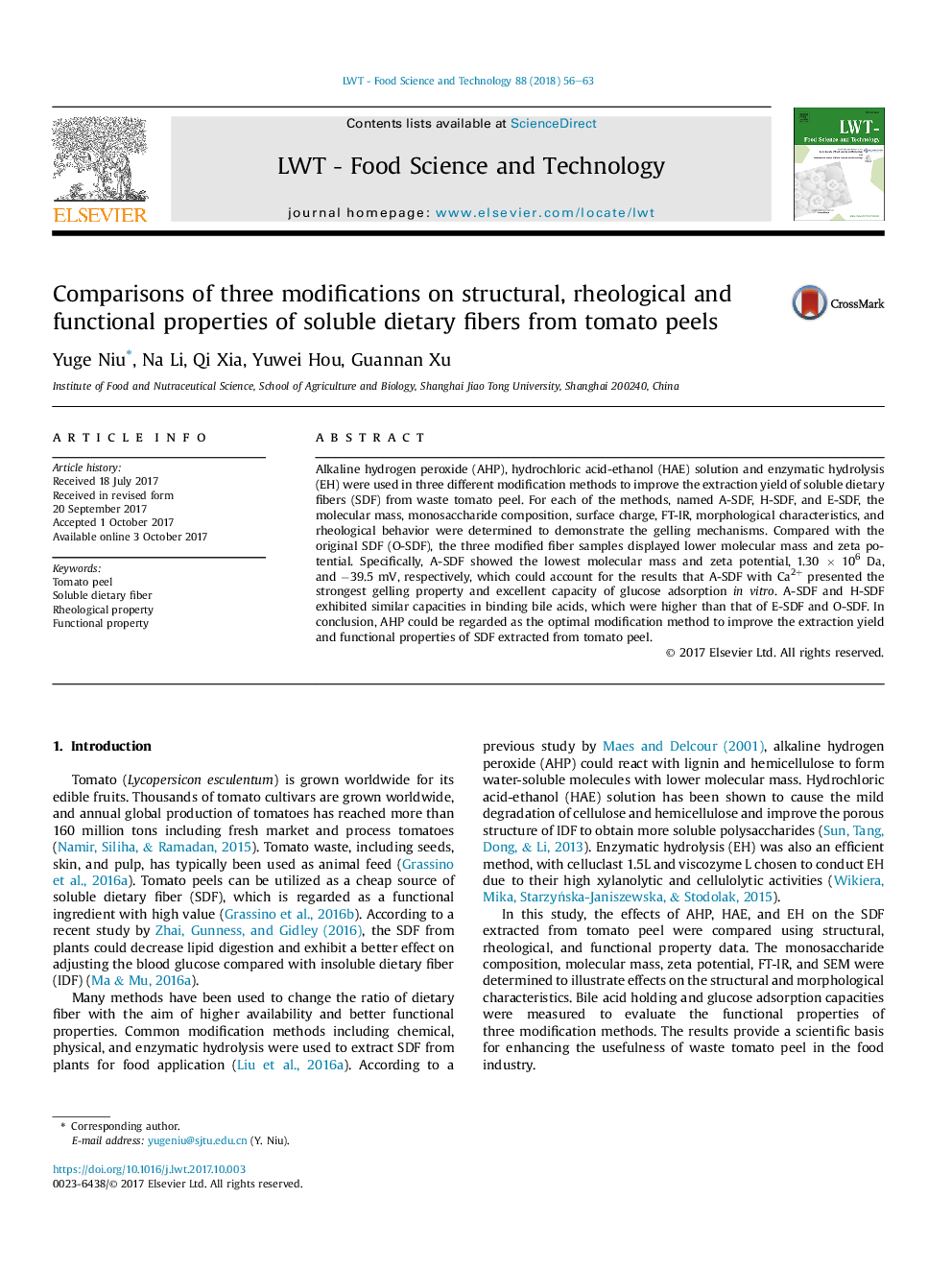| کد مقاله | کد نشریه | سال انتشار | مقاله انگلیسی | نسخه تمام متن |
|---|---|---|---|---|
| 5768354 | 1628511 | 2018 | 8 صفحه PDF | دانلود رایگان |
- Three modification methods were used to increase the extraction yield of SDF from tomato peels.
- SDF treated by alkaline hydrogen peroxide had the strongest gelling property.
- SDF treated by alkaline hydrogen peroxide had the best functional properties.
Alkaline hydrogen peroxide (AHP), hydrochloric acid-ethanol (HAE) solution and enzymatic hydrolysis (EH) were used in three different modification methods to improve the extraction yield of soluble dietary fibers (SDF) from waste tomato peel. For each of the methods, named A-SDF, H-SDF, and E-SDF, the molecular mass, monosaccharide composition, surface charge, FT-IR, morphological characteristics, and rheological behavior were determined to demonstrate the gelling mechanisms. Compared with the original SDF (O-SDF), the three modified fiber samples displayed lower molecular mass and zeta potential. Specifically, A-SDF showed the lowest molecular mass and zeta potential, 1.30 Ã 106 Da, and â39.5 mV, respectively, which could account for the results that A-SDF with Ca2+ presented the strongest gelling property and excellent capacity of glucose adsorption in vitro. A-SDF and H-SDF exhibited similar capacities in binding bile acids, which were higher than that of E-SDF and O-SDF. In conclusion, AHP could be regarded as the optimal modification method to improve the extraction yield and functional properties of SDF extracted from tomato peel.
Journal: LWT - Food Science and Technology - Volume 88, February 2018, Pages 56-63
